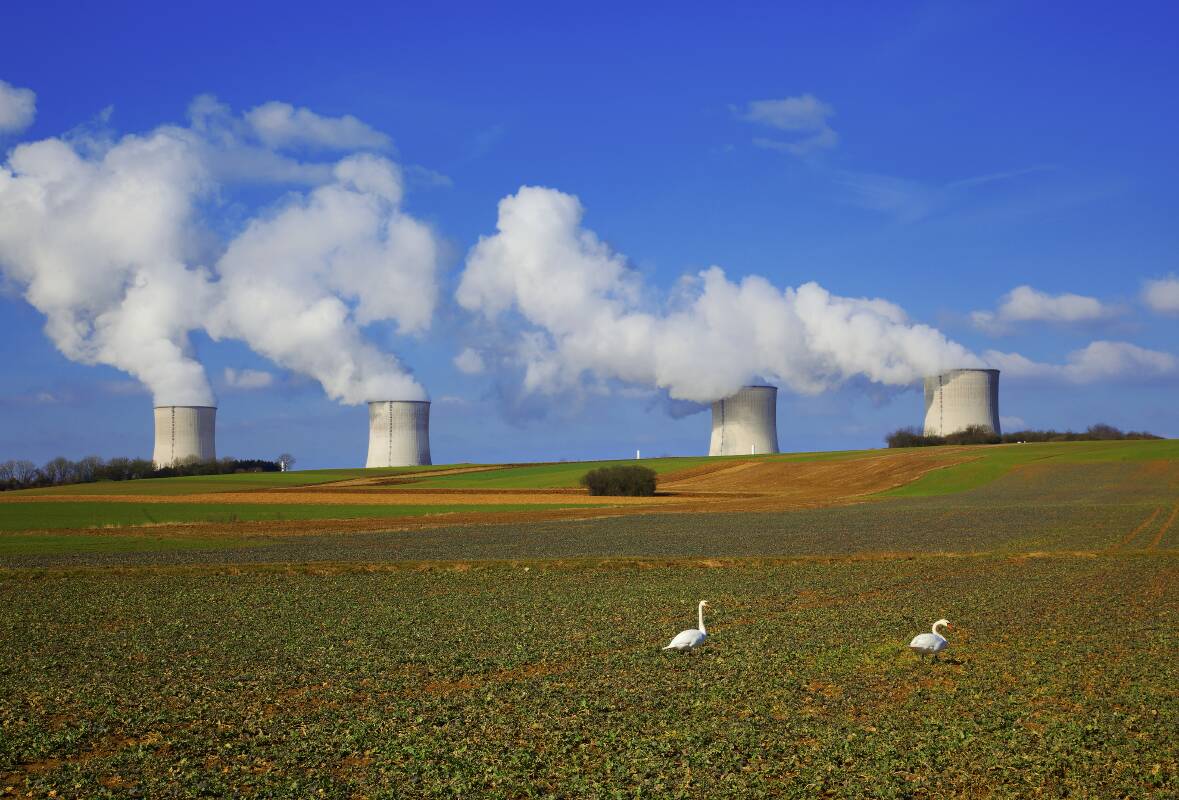
At first glance, it looked like a giant football field being created on commonwealth land at Murrays Beach near Jervis Bay in 1970. The circular earthworks were the initial stage for building Australia's first nuclear power plant. Unfortunately, this project was cancelled in the 1971 federal budget.
Long before the rise of the green movement, the nuclear power plant was not shelved for ideological reasons. It was simply a budget measure to cut government expenditure in the face of rising inflation.
During that era, advanced economies worldwide were building nuclear power stations, including France, which today gets 70 per cent of its electricity from nuclear energy.
If Australia had started and continued down this path during the 1970s and 1980s, when our power demands were expanding rapidly, most of our electricity in the 2020s would be delivered through clean, green, zero-emission nuclear power.
At the Glasgow COP26 in 2021, Australia signed up to achieve zero greenhouse gas emissions by 2050. The path to achieving this target was set in 2022 by the incoming ALP government, exclusively with wind and solar renewable technologies, firmed by hydro and batteries.
Despite Minister for Climate Changer of Energy Chris Bowen's bluster, after two years of ALP government, renewable construction continues to fall seriously behind projected targets. The plan requires 28,000 kilometres of new and ugly transmission poles and wires by 2050-the equivalent of the coastline of mainland Australia. Additionally, 58 million solar panels and 3500 wind turbines must be built by 2030. Mission impossible.
As attempts are made to build coastal windfarms in places such Port Stephens and to string thousands of kilometres of power lines over pristine farmland in places such as the Hunter Valley, widespread community outrage has resulted. This is seriously slowing the rollout of renewable technology in our country. While it has become clear to the world's advanced economies that they are unlikely to achieve net zero by 2050 using firmed renewables, Australia is the exception. At the COP28 in Dubai in 2023, 22 nations signed a pledge to triple global nuclear energy by 2050 to try to make up the shortfall. Not so in Australia.
In Europe, 22 per cent of power is already nuclear. However, the European Union, which led the renewables charge over the past 10 years, now realises it can't get this technology to work at the scale needed. EU countries, including Germany and Sweden, are ramping up construction of nuclear power plants.
Worldwide, there are 62 nuclear plants being built in 17 countries, and many more are planned. The UAE just completed a nuclear power plant within 10 years from a standing start, and South Korea has just built four next-generation APR-1400 reactors. Curiously, Mr Bowen thinks Australia is incapable of doing this.
Australia is the only one of the 20 OECD advanced economies without nuclear power in its energy mix. It is increasingly evident that Australia will not reach net zero by 2050 just with firmed renewables, so a shift to starting the construction of large-scale nuclear power plants will be a hot-button issue in the 2025 federal election.
With electricity demand expected to double between now and 2050, only nuclear power is scalable to fill the baseload gap left by the shut-down of coal-fired power. There is a growing consensus that large-scale nuclear reactors should all be built on the sites of shut-down coal-fired plants such as Liddell initially, and later nearby Bayswater in the Upper Hunter.
Nuclear plants are expensive, but they will last for 70 years (ocean windfarms - 17 years), and Bowen never mentions that once built, nuclear produces electricity much more cheaply than renewables and will reduce power bills.
The most recent Newspoll reveals how quickly Australian attitudes towards nuclear power have moved. Support is at 55 per cent, with two-thirds of 18- to 36-year-olds in favour. "The onus is now on Labor to convince Australians why we shouldn't have nuclear power," commentator Simon Benson says.







